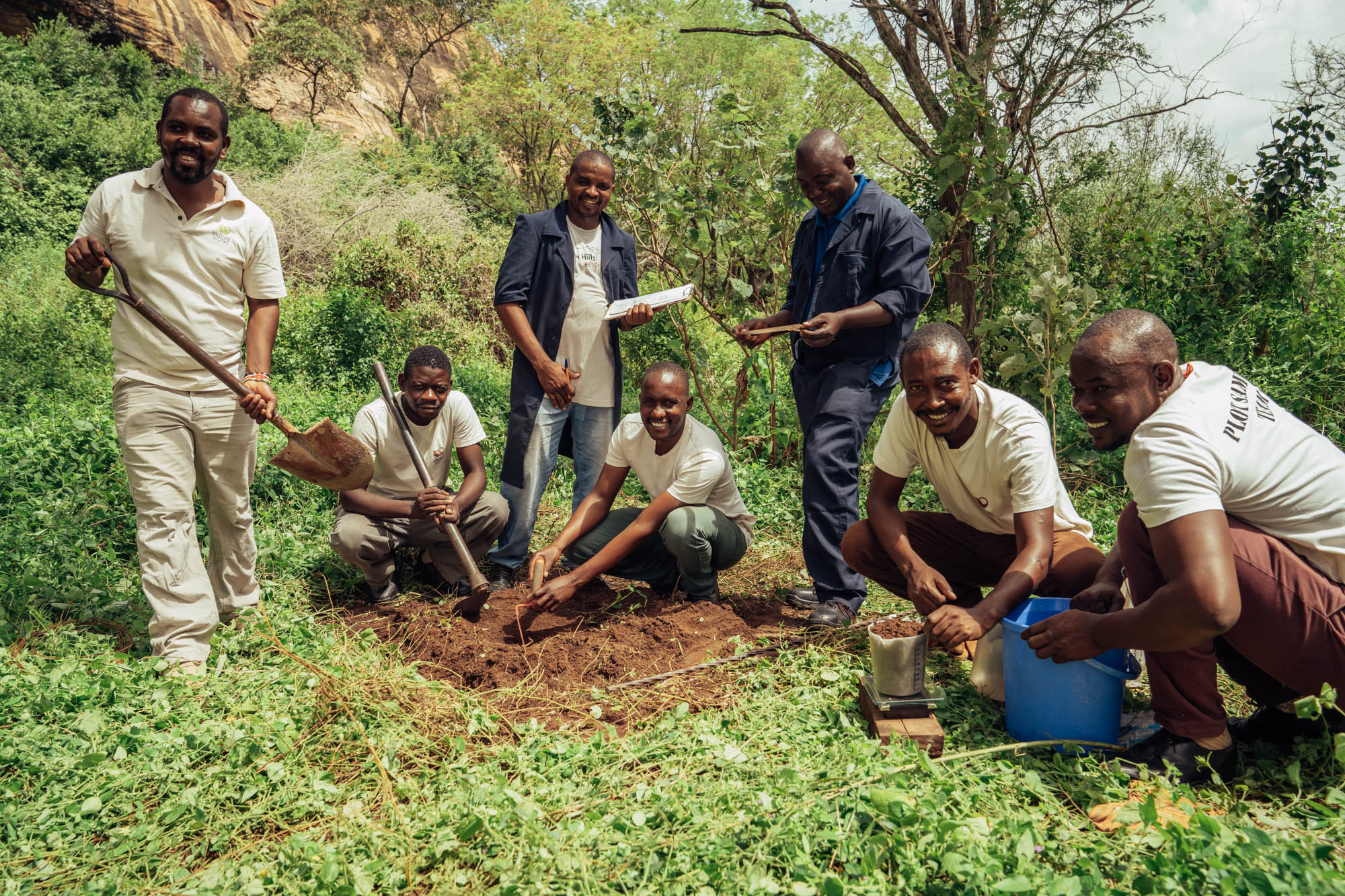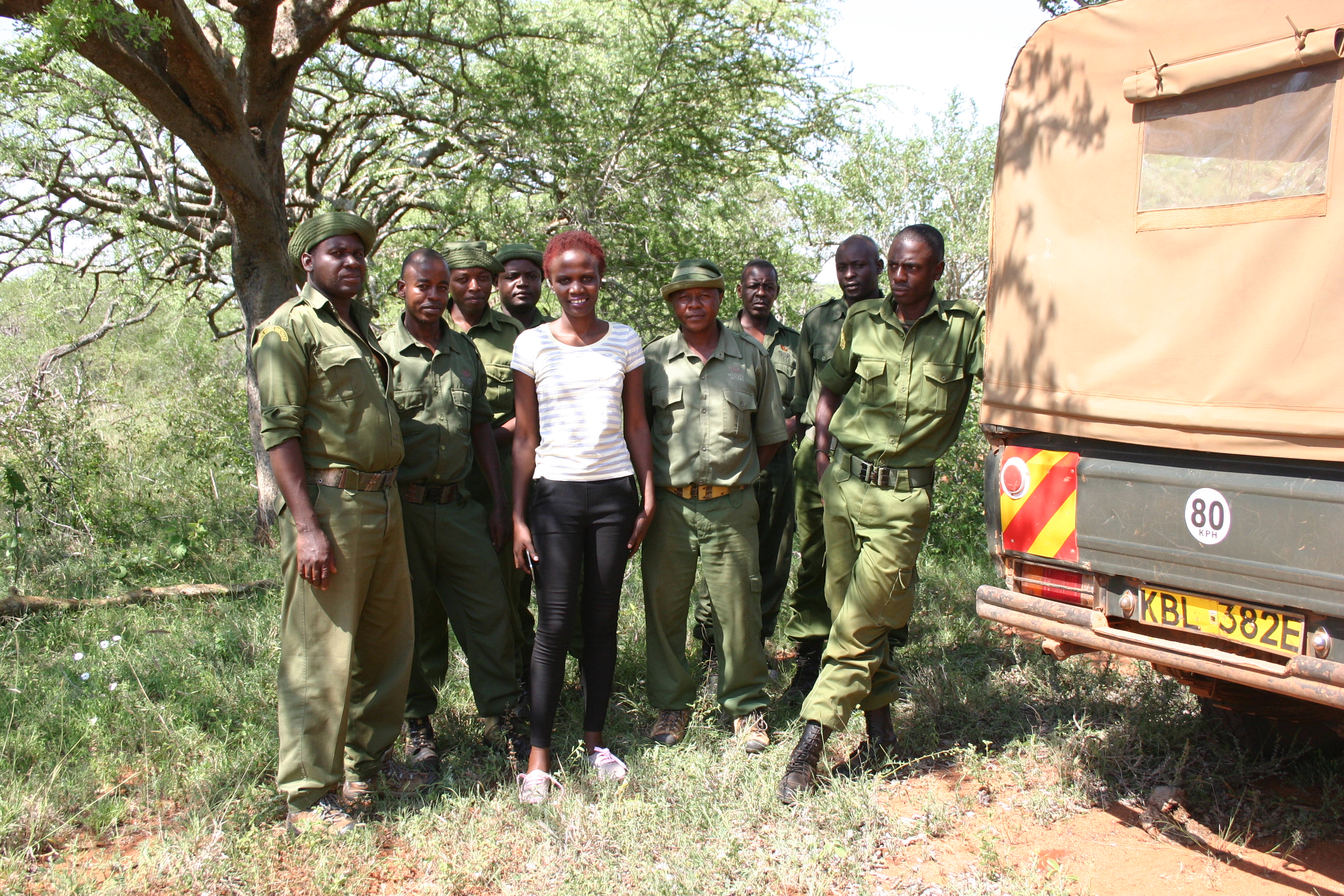
Kasaine Fences; A Solution to Human-Wildlife Conflict?
By Jane Okoth
They may be the most fascinating and intelligent mammals, but in some areas of rural Kenya, elephants pose a major threat to farmers because of their crop-raiding behavior. Human-wildlife conflict occurs frequently in dryland areas with a large wildlife population and the Kasigau Corridor REDD+ project in Kenya is no exception.
Joseph Mutua, a small-scale farmer residing in Ngambenyi, which is part of the project area, has been a victim of seasonal crop-raiding for many years. Three days prior to our visit, an adult male elephant had visited his farm and ravaged his pawpaw trees. “It was around 1 am but lucky enough my dog raised an alarm and we managed to drive the elephant away,” he recalls. Elephants tend to crop raid at night, forcing farmers to stay up late to keep guard of their crops, sometimes past midnight. According to Mutua, they begin invading as early as 7 pm. Failure of the elephants to show up by midnight is a sign of relief for most farmers because this is indicative that they might skip that night. “The invasions are always unpredictable and sporadic. We may drive a large herd away only to be attacked two days later. There are other times when they might give us a week rest then come back again and it becomes a cycle,” he explains.
During the confrontation, farmers are forced to defend their crops using various traditional ways such as throwing stones using a sling, firecrackers, and pointing flashlights at the elephants to try and scare them away. The damage caused by crop-raiding elephants is economically devastating, especially to small-scale farmers. An adult elephant may eat over 400 pounds a day, and a herd has the potential to consume an entire crop field in one night. “Sometimes they may overpower us, and we end up harvesting half of our crops or nothing at all,” he says.
Wildlife Works has joined forces with different stakeholders in conservation to address this issue within the project area. One is by working with local farmers in the Kasigau Corridor REDD+ project zone to secure their crop by having Wildlife Works rangers’ team up with Kenya Wildlife Service to scare and drive elephants out of farms.

Another way is through the construction of human-wildlife conflict mitigation fences. In 2014, Simon Kasaine, a Research Scientist at Wildlife Works invented a unique method of elephant deterrent dubbed the “Kasaine” fence, after conducting extensive trials of different methods of elephant deterrents. The Kasaine fence is a long length of wire with metal strips hanging down, which is placed on poles to enclose the farmer’s field. The metal strips hanging from each wire make a recurrent sound when contacted or blown by the wind acting like a giant wind chime, which tends to scare the elephants away.
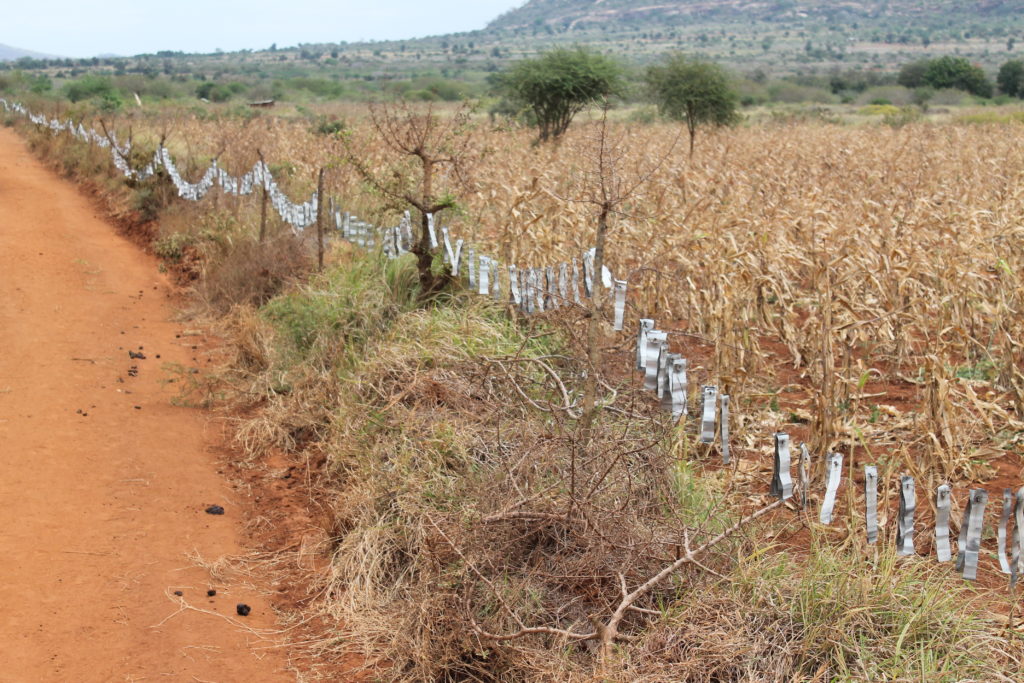
In 2017, Wildlife Works in collaboration with Western Kentucky University, Jomo Kenyatta University of Science and Technology, and Earthwatch conducted field experiments to test the efficiency of the metal strip fence in Sasenyi, part of the Kasigau Corridor project area. The fence was proven to have deterrence effect, especially on elephants. To date, all farmers in Sasenyi area whose farms border Rukinga Sanctuary, as well as those in Ngambenyi bordering Kasigau ranch have the frontline Kasaine fence constructed at their farms thanks to funding from Wildlife Works and their collaborators. In addition, camera traps mounted on the fence posts are used to monitor elephants’ behavior as they approach the deterrent fence and their movement pattern.
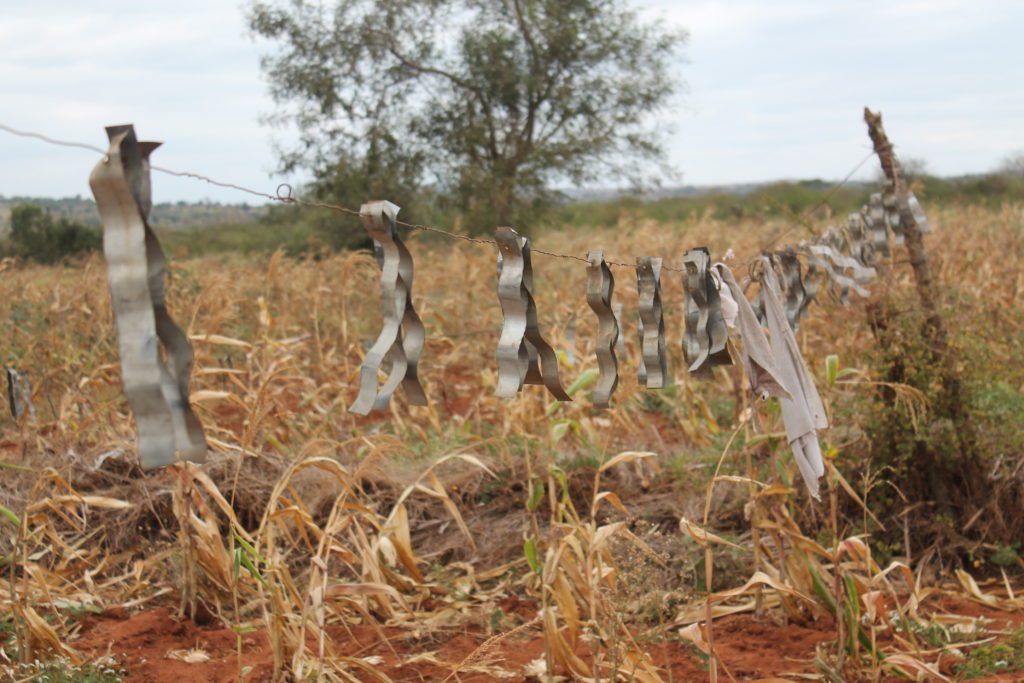
Philip Nzangi and Chimanga Ruma are the caretakers in charge of constructing, monitoring, and maintaining the metal fences in Sasenyi valley. They also collect data on elephant activities in the experimental blocks and general human wildlife conflict, then submit their data to the biodiversity and social monitoring team.
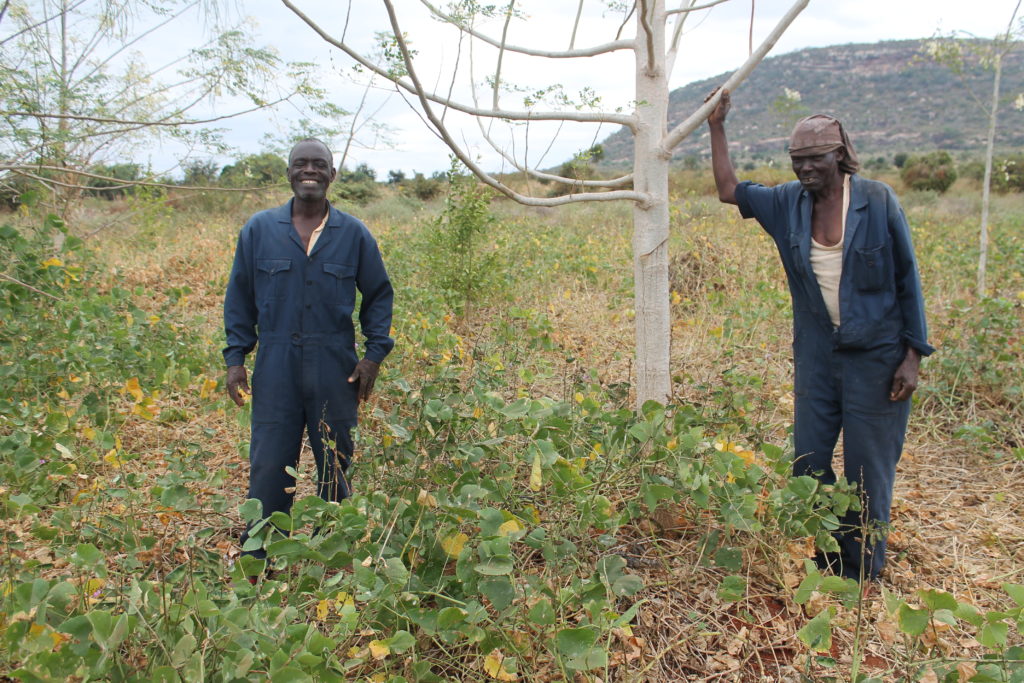
“Elephants tend to avoid fields with Kasaine fences,” Kasaine says. “and even if they don’t, the damage done to crops is minimal because elephants do not feel safe inside the fences,” he adds.
For John Mande, one of the beneficiaries of the metal fences who owns an 8-acre farm, he can now afford a good night’s sleep. “The past two harvesting seasons have been nothing but joy. I can plant and harvest my maize, cowpeas and green grams without having to worry about the elephants,” he says. “Before the fences were erected, we were forced to stay up all night to guard our crops with the help of Wildlife Works rangers,” he says.
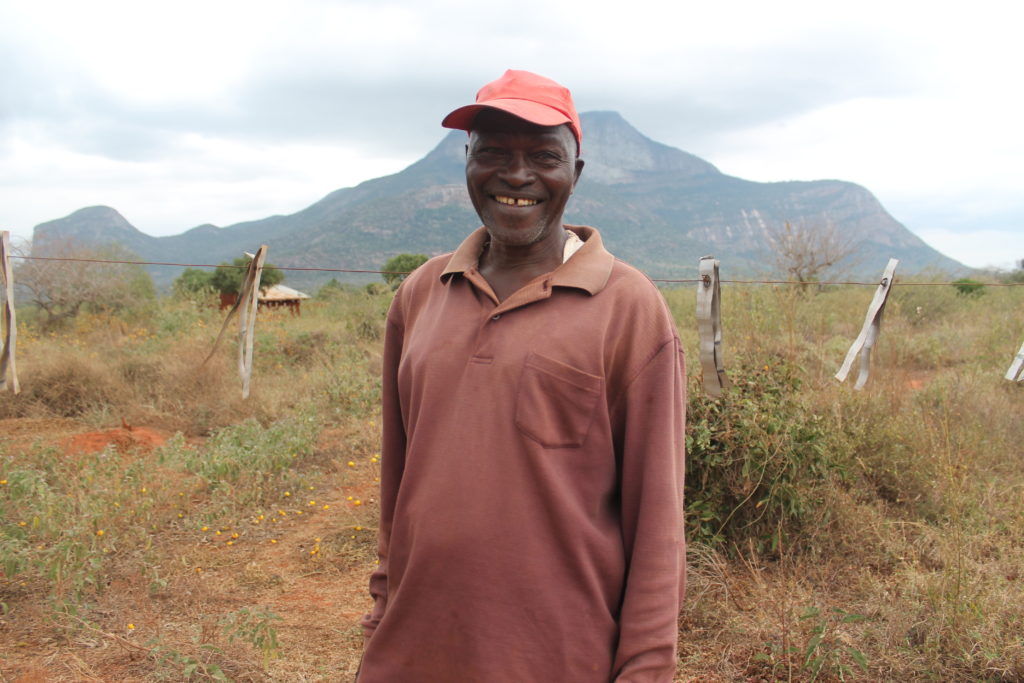
Although the fencing is a blessing to John and a few farmers in the area, it’s a bitter experience for John’s neighbour Peter Musyoki, who is yet to benefit from the fencing project. Peter is still experiencing frequent elephant invasions, and since the elephants are afraid of invading farms with the Kasaine fences, Peter’s fear is that his farm has become an easy target. However, Wildlife Works is in the process of completing the remaining 2.7km section of the 3.7km front line of the conflict area.
The Kasaine fences are an effective elephant deterrent method that has reduced the impacts of human wildlife conflict significantly in addition to engaging communities in wildlife management. With sufficient funding, farmers like Joseph Mutua and Peter will also have their farms erected with the fences. Kasaine and his team are also planning on conducting workshops with local communities in the area to educate them on the latest climate-smart agricultural techniques that have already been tested in other parts of the Kasigau Corridor and are yielding good results.
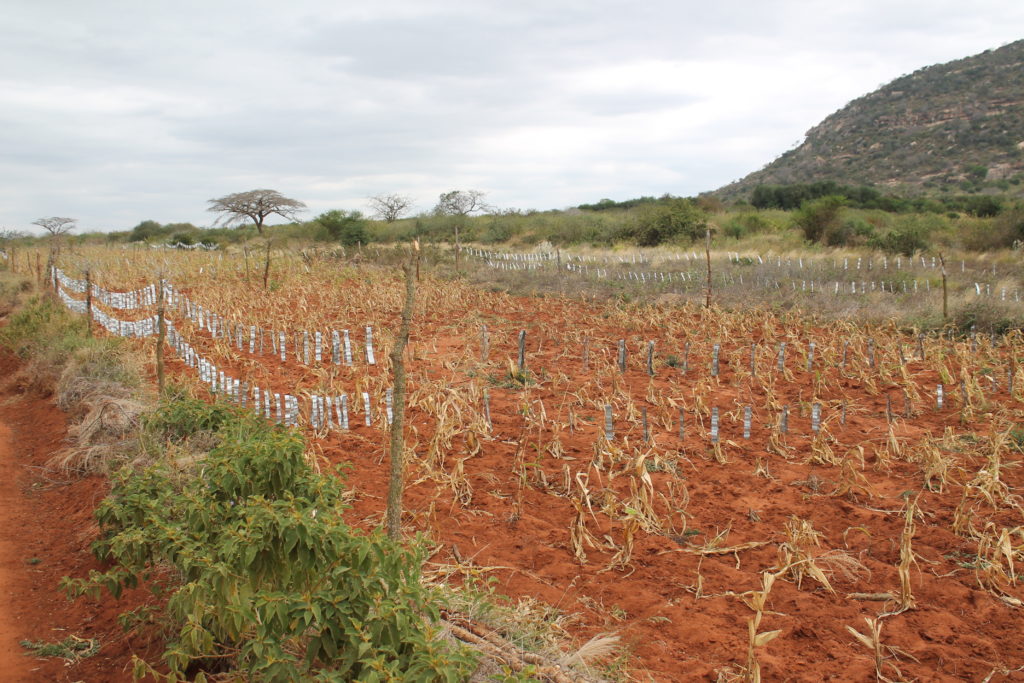
Wildlife Works is proud to be involved in this project by funding the construction of the fences and providing logistical support to researchers. A huge appreciation also goes to Simon and the Wildlife Works’ Biodiversity team for making the project a success thanks to their valuable guidance and insights.
